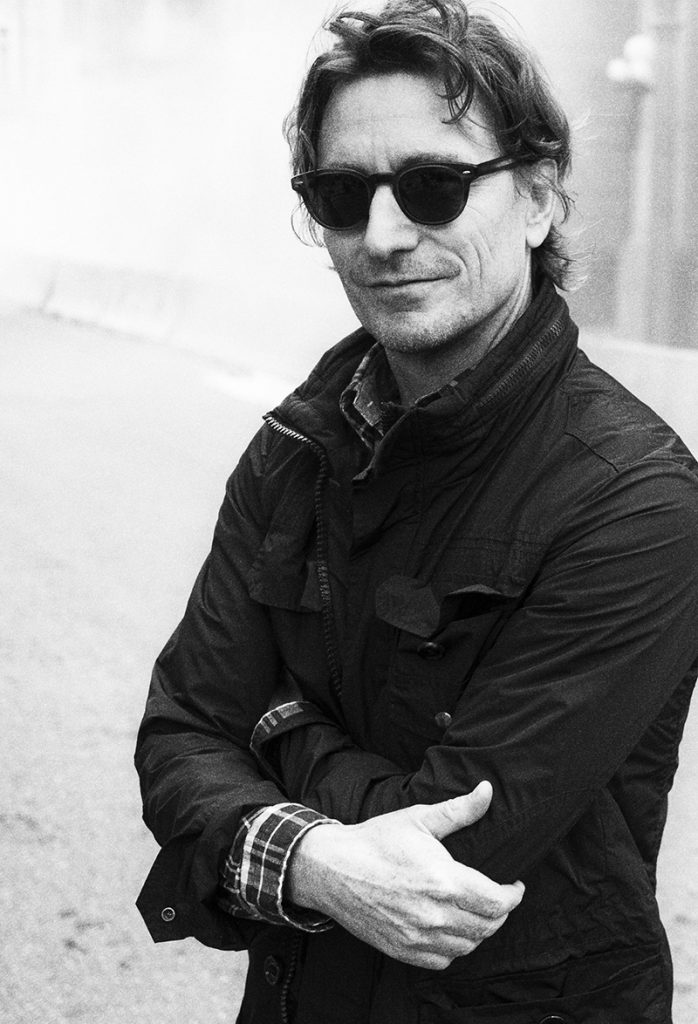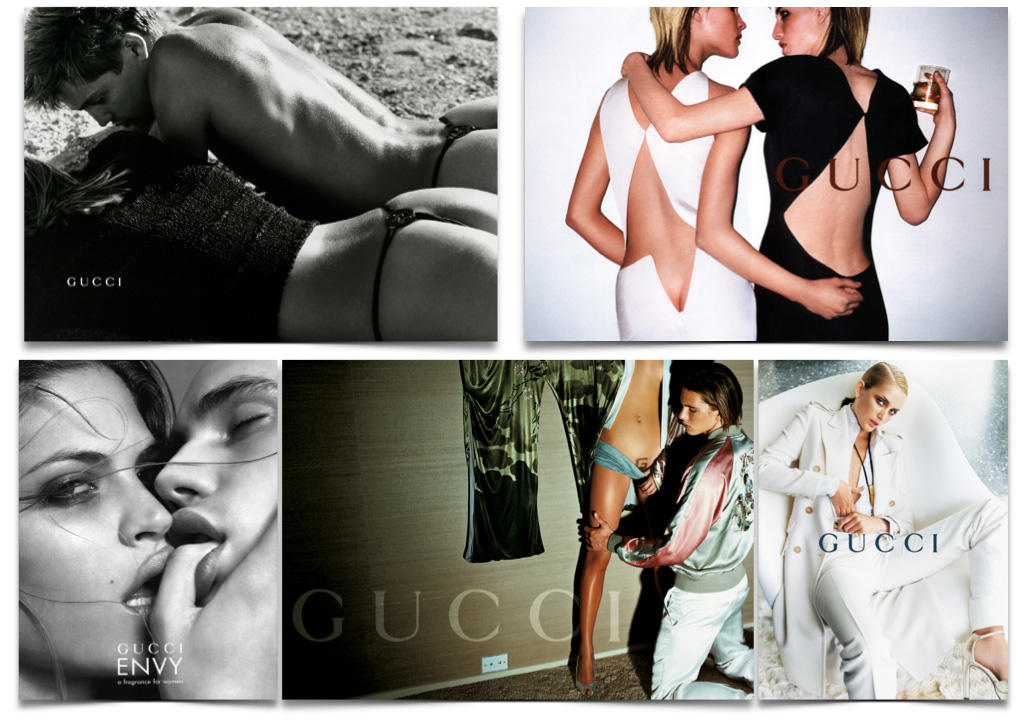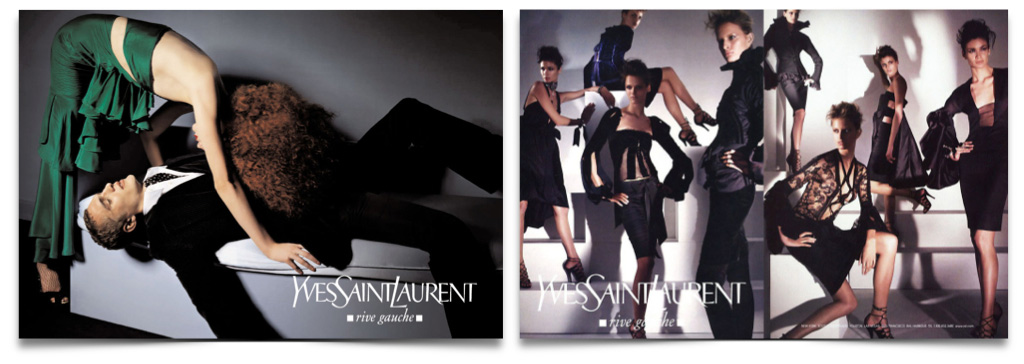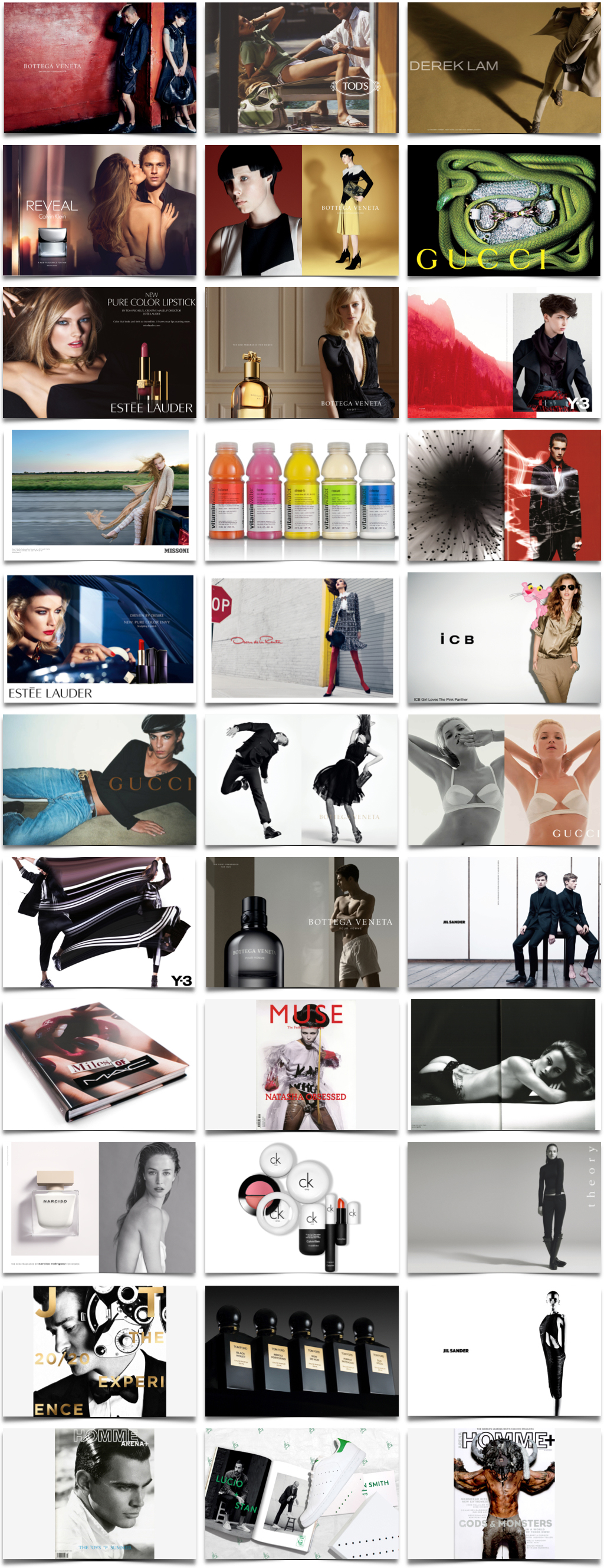It is easy to assume that the most valuable skills necessary to become a great creative director are vision, perseverance, and esthetic taste. And while all these traits are important, one should view them as a foundation for success but not the keys. The real key is listening. Listening to the clients, listening to the ground, and listening for the future. DOUG LLOYD is a spectacular listener who leveraged this strength some twenty years ago to launch his agency LLOYD&CO with a fresh client who set his sites on the future, Tom Ford. Their collaboration changed the game and LLOYD&CO went on to win a broad range of clients including Bottega Veneta, Y-3, Estée Lauder, Jil Sander, Gucci, Yves Saint Laurent, Oscar de la Renta, Max Mara, and Vitamin Water, to name a few.
Over the years the agency has been provocative, puritan and always purposeful to clients’ needs. The Impression sat with the modest founder Doug Lloyd to chat about how he got his start, the power of being cheeky, Tom, storytelling, surfing, and the future.
BY KENNETH RICHARD
[column size=two_third position=first ] 
[column size=one_third position=last ]
Doug, really great to catch up and appreciate you taking the time as it has been a busy season. Can you share how you got started?
I went to Art Center in Pasadena and studied design and a bit of photography and fine arts, so that’s a bit of my academic background. Then I came to New York and after working for corporate identity, I ended up working for Barneys. At the time it was just the one store in Chelsea. It also was a real breeding ground for talent with creative energy and had a lot of great people and photographers doing work for them. So that was my emersion into the fashion-branding world.
That’s an amazing emersion; Glenn O’Brien was with you during that time as well right?
Absolutely, yes it was Glenn, Neil Kraft, and it was an incredible place to get to know the industry. I knew more of the graphic designer world and less about the fashion world but I definitely had a quick emersion into that world just by working with Meisel on those early campaigns.
What inspired you or gave you the courage to go off and open your own boutique after that?
My inspiration was one that seems to happen to a lot of people. I was working at Mademoiselle and they decided that the direction that they had taken the magazine wasn’t the direction that they ultimately wanted to take, so I was the first one to go. I found myself wondering what to do and Raymond Meier, whom I had worked with a lot, was just starting to do work for Tom Ford at Gucci. He told me they needed an art director and asked me to meet with Tom. It was fortuitous timing, just two like things coming together, personalities clicking, and things like that. It really just is amazing how things happen.
What a fascinating way to start. Can you share a little bit about that early Tom Ford experience and how you guys laid the foundation for Gucci visually?
It was an incredible experience. There was an energy of freedom with Tom pushing the brand forward and looking at the brand overall and to see what needs to stay and what absolutely had to be thrown out so we could move the brand forward. Again, I had worked at Barneys and the Gap, so to do that project was just really something.
It was taking a well-known brand and thinking of how you could turn it on its head and make a new generation of customers look at Gucci in a different way. So obviously Tom’s leadership was super inspirational and the team that was around us was consistent so it was incredible to have a core team look at what we were doing and try to push the identity visually on every level. It was very 360 oriented.
You didn’t just push the identity; you pushed the boundaries of fashion advertising. Was there ever a moment where you thought to yourself, I can’t believe we’re doing this?
Yeah, there were quite a few moments! (Laughs) There were the moments on the shoots where half the time people were being cheeky or pushing things. Tom really supported having at least one or two images each season that made people stop and look at the campaign to read them and see what the boundaries were. That was consistently something that inspired everyone and pushed us to keep trying to come up with things every season for the brand.
[column size=one_half position=first]
You were there when Tom took on dual roles at Gucci and YSL how was that evolution?
It was quite similar to the evolution of Gucci. It was crazy because there were so many things going on for him at that time in terms of trying to design and manage the identities of two brands, particularly the Saint Laurent. YSL was sort of encumbered with history and the passion that everyone feels for that brand. It was a similar process of Tom trying to figure out what the design was, who the woman was and how you could talk to that woman in a different way than the Gucci women.
So you also did both fragrances as well as the ready-to-wear for those brands, as you do now for Bottega Veneta. Many brands separate them, do you find doing both a unique situation?
It does happen separately in a lot of brands. But from a holistic standpoint and a creative director standpoint, it just makes so much more sense to have one set of eyes and mind behind expressing what the brand’s vision is. Obviously a lot of brands like Chanel or Dior, that have such huge and established beauty businesses that go beyond fragrances with cosmetics and skin care, are too big for one person to tackle. With the scale of their businesses I understand how those brands tend to split things up. However, I feel like for other fashion brands that have five or six fragrances and are not as in-depth in the skin care and cosmetics world, it makes more sense to have one vision since it’s easier to maintain.
What can you tell me about the agency now and how you feel you’ve evolved since when you first started?
We’ve evolved with the industry itself. Film and digital are really part of how the agency has evolved and changed but at the core we are the same. We have a youthful energy and spirit which is a creative influx that comes into helping stimulate and evolve things visually.
Let’s talk about fashion film, how important is fashion film today?
Hugely important. It’s kind of crazy that it took so long to grow in importance on the internet. I think mass brands or other consumer brands have been deeply invested in broadcast since the beginning. The idea of fashion evolving into film is just one more tool that really helps the designer tell the story. Everything now is built around story telling to help the customer realize what’s so special about that brand and how the designer thinks. Story telling gets people excited and film is important from a creative standpoint because there’s so many more elements to play with, like time and music.
Opposed to still image, which is something that I love. The idea with working with film and motion is something that is super exciting now.
[quote text_size=”small”]
Everything now is built around story telling to help the customer realize what’s so special about that brand and how the designer thinks.
Do you find yourself concepting films first or stills first?
It depends on the brand and on what the brand’s digital experience is and how adept they are in terms of getting stories out there. We’ve done a lot of stuff with Y-3 and they’ve been very forward in terms of pushing their digital experience. Obviously the customer they go after is a younger, more tech-oriented crowd. On Y-3 we think about how motion can be a part of the initial idea and also because of their heritage, which is based around motion, it makes sense to start with a film concept and let that roll out.
Can you speak about how you go about projects as a company and partner with brands?
Sure, it is important when you work across multiple brands to get inside the DNA of the brand and figure out what it is that you can grab on to and to hold that and reuse it in a way that is understandable by multiple people and multiple platforms.
Our process is getting in there and discovering in a strategic, thoughtful way what is the brand, who is the customer, and how we can take all of that and find something unique to re-purpose it.
So we explore and dig to try and differentiate, particularly when you are working in a field with multiple brands.
What do you think great brands do that others don’t?
I think it ultimately comes back to the idea of story telling.
When it becomes tricky for brands is when there are so many different layers of people and teams that come into the creative equation and it starts to dilute what the message is. I think ultimately it comes across as a fractured, confused message and the customer gets confused and the brand ultimately suffers from it.
It’s really important for the designer or the head of a great brand to have a strong point of view and for them to be the keeper of that flame. For agencies like ourselves, what is super important is to be working directly with that person that has that idea. It’s that connection between the agency and the creative visionary to distill the brand elements.
[quote text_size=”small”]
It’s that connection between the agency and the creative visionary to distill the brand elements.
See that happening a lot, particularly, as fashion gets more corporate, if that’s the right word, it’s not as emotionally impulsive of late.
You are totally right and I think the way that fashion’s structure has changed into three collections a year, with a pace and cycle of renewal and a desire for freshness and newness, makes it difficult. That pace allows for a lot of different messages to get put out there, especially since there’s so many kinds of mediums that are available now. It is tricky to keep your arms around everything that a brand does and what a customer sees from a brand. You have to keep them on point so the message is clear and focused. The customers get it when it is consistent and appreciate those brands and want to be a part of it.
Fashion also has an element of change. How do you know exactly when it’s time to change?
It’s tricky. I think it may be specific to a brand when change is right. When you look at the model of Ralph Lauren, who has really been true to who they are and are a hugely successful business, there isn’t a need for change. When you look at a model like H&M or something that reflects trends and conveys energy, it is a valid business, too. So it’s kind of hard to answer that.
So what do you do when you’re not involved with fashion?
Anything I can to be the furthest from it. (Laughs)
Is that even possible?
It is; I love outdoor sports like skiing and summertime sports like waterskiing and surfing and biking. So anything that involves nature and being in a bigger, broader expanse is great. Same thing with traveling, going places and seeing new cultures and new things. Anything like that is great and very horizon expanding.
Better hope the team at North Face doesn’t read this as you could find yourself with a new client and outdoors will become work too.
So true.
So tell me about 2015, it’s still early; do you have any wishes for it?
In the past we’ve done a lot of magazine and editorial work and I haven’t done that for a couple of years and something like that would be fun. Otherwise we’re excited to continue to help the brands we partner evolve and grow and stay relevant.
That’s great; thanks, Doug for taking the time.
Nice chatting with you.



